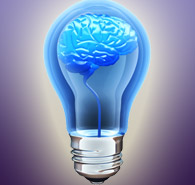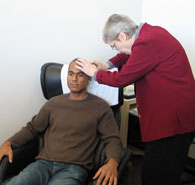 The Dysponesis Hypothesis
The Dysponesis Hypothesis
We are always casting about for better ways to frame the work that we do in order to make it comprehensible to other professionals and lay persons. Sometime it helps to dip into past history to see how others wrestled with the same issue. One notion that has threaded its way through is that of simple inefficiency in brain regulatory function, which naturally leads to the suggestion that our training improves regulatory effectiveness through promoting higher efficiency in the regulatory mechanisms. It’s a simple concept with a certain amount of face validity, and also offers the virtue of vagueness where we are still uncertain about the details. Another slightly different theme is that the brain sometimes works against itself, that its efforts to right the ship are sometimes counter-productive.
The term dysponesis encompasses a variety of dysfunctions in which the CNS operates counter to the desired end-result. In considering the possible utility of this term in modern parlance, I am going back to an article written by George Whatmore and Daniel Kohli back in 1968 (Behavioral Science, 13(2), 102-124, (1968)), and reprinted as a book chapter in the text Mind/Body Integration (Erik Peper, Sonia Ancoli, and Michelle Quinn, editors), which was first published in 1979. The authors were two physicians in private practice.

 The individualization of training has had a long history in neurofeedback. It began perhaps with Joel Lubar’s choosing whether to reinforce the standard SMR band of 12-15Hz or the low-beta band of 15-18 Hz, or whether to do both in pursuit of different objectives in work with ADD/ADHD children. At our hands, it eventually became a matter of choosing whether a person should train “SMR” at C4 or “beta” at C3, or perhaps a mixture of both. There seemed to be a general tendency toward lower-frequency training at the right hemisphere. We were able to address hemisphere-specific function in a more optimized way, and we could modulate arousal level more flexibly with the two available choices.
The individualization of training has had a long history in neurofeedback. It began perhaps with Joel Lubar’s choosing whether to reinforce the standard SMR band of 12-15Hz or the low-beta band of 15-18 Hz, or whether to do both in pursuit of different objectives in work with ADD/ADHD children. At our hands, it eventually became a matter of choosing whether a person should train “SMR” at C4 or “beta” at C3, or perhaps a mixture of both. There seemed to be a general tendency toward lower-frequency training at the right hemisphere. We were able to address hemisphere-specific function in a more optimized way, and we could modulate arousal level more flexibly with the two available choices.